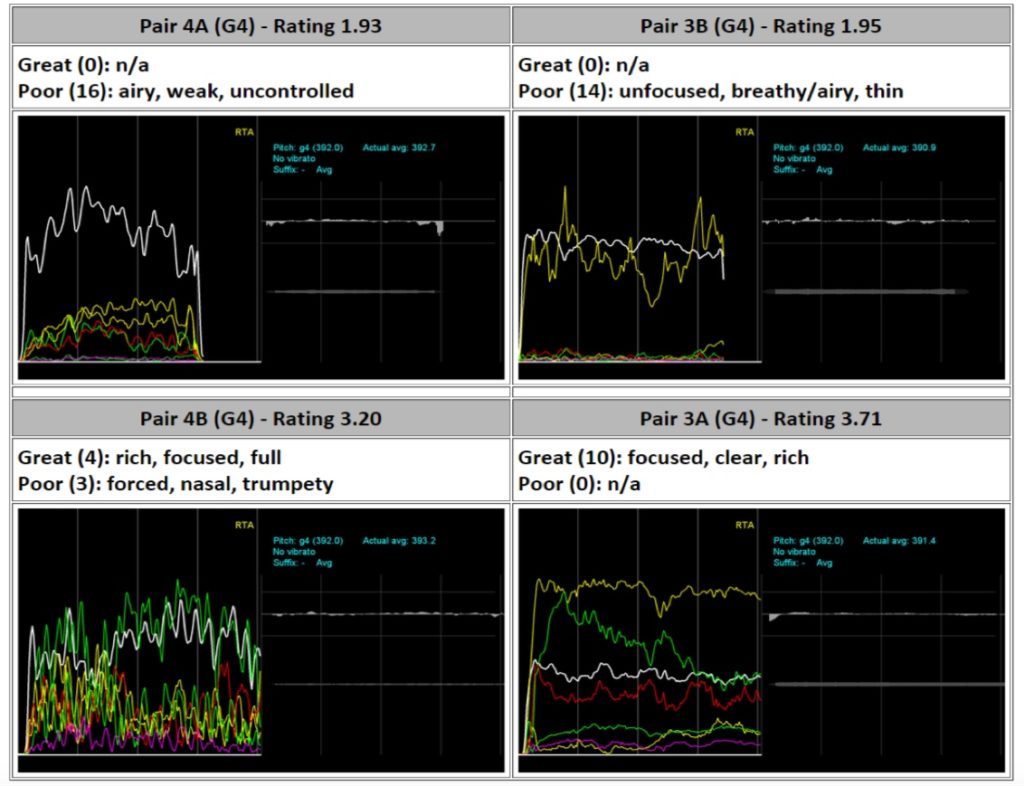Flute Tone Spectral Analysis
- Marlene
- Blog, flute, Uncategorized
- No Comments
Flute Tone Spectral Analysis
Flute Tone Spectral Analysis
I came across a very interesting thesis project by Ron Yorita titled “Flute Tone Project.”
Yorita designed a program to analyze the tone of flute players. He calls this tool the HAT App.
Using the HAT App, Yorita examined the spectral analysis of the flute tone of nine professional flutists. They were all playing the same note (a low D-flat) in the same piece of music (Debussy’s famous “Syrinx for Flute Solo.”) It’s easy to see that each flutist has a different mix of overtones. Six of the nine players are represented in this screenshot:
You can see that each of these players use a different mix of overtones. Each note in the overtone series being represented by a different color. Emmanuel Pahud’s is particularly striking because the dominant overtone changes dramatically from the beginning of the note to the end.
On this page, Yorita includes an “anonymous amateur” for comparison.
What does a good tone look like?
Flute Tone Survey asked members of the Flute List to listen to and evaluate the tone of unknown flutists. The flutists who participated in this experiment had a high degree of training as professionals/teachers. The professional flutists listened to audio clips and rated the tone quality. The spectral analysis of tones with the two lowest scores and two highest scores are here:
Results from the Flute List survey indicate a preference towards timbres rich in harmonics. However, the appropriate balance of harmonics is clearly important. For example, if H3 is disproportionate, the quality can become too harsh or edgy for some listeners. On the other hand, insufficient upper harmonics may be judged as too weak or airy. As pitch varies so does the harmonic spectra, therefore the criteria for an appropriate mixture of harmonics changes for each pitch. Additionally, musical context and taste plays a significant role. The survey contained two samples that demonstrated a wide range of ratings which may reflect differences in taste.
Spectra Comparisons for three flutists showing how different players will employ vastly different mixes of overtones. It also shows spectral analysis of oboe and trumpet tones.
HAT app
Have you used spectral analysis to develop tone? The author of this study is developing a harmonic analysis tool. (HAT app). What do you think of this? Is it something you would use to improve your tone or with students?


No comments.